1. Pengenalan
Injap bola port penuh mempunyai bola dengan diameter port sama dengan diameter saluran paip dalaman.
Reka bentuk itu menghapuskan sekatan aliran pada injap, Meminimumkan penurunan tekanan, Mengurangkan hakisan, dan membenarkan babi dalam perkhidmatan saluran paip.
Kerana kelebihan ini mereka digunakan secara meluas dalam minyak & gas, petrokimia, air, sistem farmaseutikal dan kemelut tinggi.
Perdagangan adalah saiz dan berat yang sedikit lebih besar, dan kos yang lebih tinggi berbanding dengan injap port yang dikurangkan-tetapi dalam banyak aplikasi perindustrian manfaat operasi melebihi kos tambahan.
Artikel ini menganalisis injap bola port penuh dari teknikal, pembuatan, perspektif operasi dan perolehan dan termasuk panduan yang didorong oleh data untuk pemilihan dan spesifikasi.
2. Apa itu injap bola penuh?
A Port penuh (aka penuh) injap bola adalah injap giliran seperempat yang bola (pembukaan melalui bola) adalah diameter nominal yang sama seperti paip yang dipasang di.
Dengan kata lain, Injap memperkenalkan Tiada sekatan yang disengajakan ke kawasan aliran paip apabila dibuka sepenuhnya.

Mata Teknikal Utama
- Menanggung kesamaan: Untuk injap port penuh yang ditentukan dengan betul orifis bola ≈ diameter dalaman paip (Id).
Ini berbeza dengan a dikurangkan-port (atau dikurangkan) injap bola yang membosankan lebih kecil daripada id saluran paip. - Akibat hidraulik: Kerana kawasan aliran tidak dikurangkan, injap port penuh mempunyai Penurunan tekanan minimum dan CV sangat dekat dengan CV paip lurus untuk saiz nominal yang sama.
- Sinonim: port penuh = melahirkan penuh; Kadang -kadang pengeluar menggunakan "port penuh" walaupun lubang itu lebih kecil - selalu mengesahkan diameter dalaman atau lengkung CV sebenar.
3. Reka bentuk & Komponen dalaman injap bola port penuh
Komponen injap bola port penuh biasa:
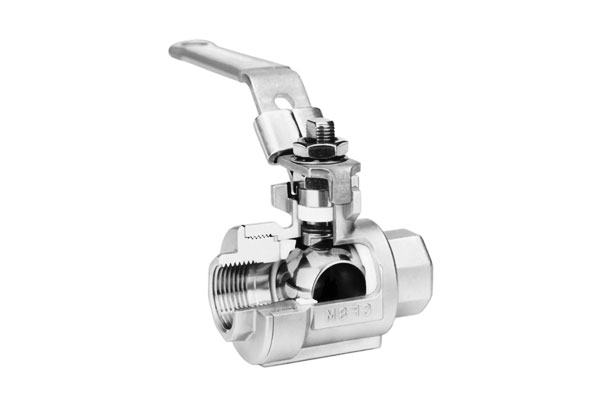
- Badan / bonet: Satu keping, dua keping, reka bentuk tiga keping atau berpecah badan.
Dua- dan reka bentuk tiga keping memudahkan penyelenggaraan dan penggantian dalaman tanpa mengeluarkan injap dari garis. - Bola (Unsur penutupan sfera): Sfera penuh; Precision Lapped To Seat. Kemasan permukaan dan hardfacing (Mis., penyaduran kromium, Stellite) digunakan untuk rintangan lelasan.
- Tempat duduk: Tutup bola; Bahan berkisar dari PTFE dan mengintip ke reka bentuk tempat duduk logam untuk suhu tinggi atau perkhidmatan kasar.
- Batang: Menghantar tork penggerak; Mengandungi pembungkusan untuk mengelakkan kebocoran.
- Anjing laut & pembungkusan: O-cincin, PTFE bertetulang, grafit atau meterai logam bergantung pada temp/kimia.
- Penyambung akhir: Bebibir (ANSI/ASME, Dari), Butt-Weld, Socket-Weld, diikat (Npt, BSP), soket atau tri sanitari.
- Antara muka penggerak: ISO 5211 pad pemasangan untuk penggerak langsung (tuil, kotak gear, pneumatik, elektrik, hidraulik).
4. Bahan, Metalurgi, dan memangkas injap bola port penuh
Bahan dan pilihan trim menentukan sama ada injap bola penuh akan bertahan satu dekad dalam perkhidmatan atau memerlukan penggantian setiap beberapa bulan.
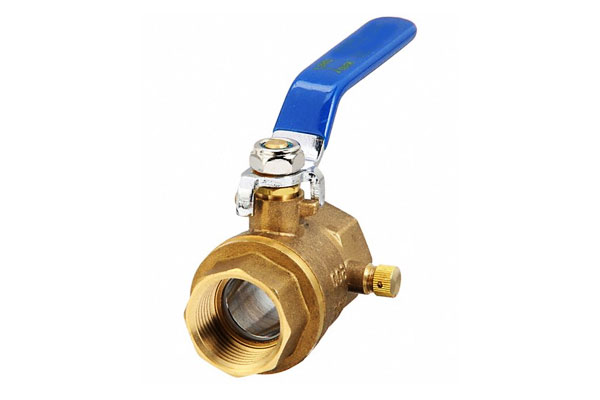
Badan injap biasa & Bahan struktur
| Bahan (spesifikasi biasa) | Penggunaan biasa | Tegangan tipikal (MPA) julat tipikal | Julat suhu perkhidmatan biasa | Pro Kunci / keburukan |
| Keluli karbon (A216 WCB) | Perkhidmatan Am, badan kos rendah | ~ 380-550 | -29 ° C → ~ 425 ° C (Permohonan bergantung) | Ekonomik, kuat; kakisan yang lemah tanpa salutan; Berhati -hati dengan galvanik dengan dalaman tahan karat |
| Keluli tahan karat 304 / 316L. (CF8 / CF8m) | Resist kakisan, kebersihan | 316L ≈ ~ 480-550 | Cryogenic → ~ 350-400 ° C (316L.) | Rintangan kakisan yang sangat baik; trim yang digunakan secara meluas; 316Saya lebih suka untuk perkhidmatan klorida dan kebersihan |
| Duplex Stainless (2205) | Air laut, Perkhidmatan yang rawan klorida | ~ 620-800 | -50 → ~ 300 ° C | Kekuatan tinggi & rintangan klorida; lebih mahal; Kimpalan berhati -hati diperlukan |
| Keluli Alloy (A182 F11/F22 / 1.25CR -0.5mo, 2.25CR -1MO) | Perkhidmatan Steam Temp Temp | ~ 500-700 | Sehingga ~ 540-595 ° C (Bergantung pada gred) | Kekuatan rayap yang baik; memerlukan rawatan haba dan pwht |
Monel (Aloi 400) |
Marin / air laut | ~ 450-700 | -200 → ~ 400 ° C | Rintangan air laut yang sangat baik; Isu kos/ketersediaan berasaskan nikel |
| Hastelloy / Inconel (Aloi) | Asid kuat / Tempatan yang melampau | 700-1000+ | Hingga 700-1,000 ° C Bergantung pada aloi | Kakisan/pengoksidaan yang luar biasa; sangat mahal |
| Gangsa / Tembaga | Tekanan rendah umum (kebersihan, HVAC) | ~ 200-400 | -50 → ~ 150-200 ° C | Kebolehkerjaan yang baik; Risiko Dezincification dalam media klorin/asid |
| Besi mulur / besi tuang | Utiliti air, Perkhidmatan yang tidak menghakis | ~ 350-550 | -20 → ~ 300 ° C (terhad) | Ekonomik untuk saiz yang besar; isu kakisan/kerapuhan |
Bahan bola & kemasan permukaan
Bola adalah pengedap utama dan permukaan aliran - metalurgi, kekerasan dan selesai menentukan kehidupan pengedap.
Bahan bola biasa:
- 316L STAINLESS (digilap) - Lalai untuk kebanyakan kimia/petro, Permohonan Sanitari. Permukaan selesai ra ≤ 0.4 μm tipikal; Ra ≤ 0.2 μm untuk kemarahan tinggi.
- Mengeras / tahan karat tahan karat (Overlay stellite / Chromium carbide Hvof) - Untuk erosif / Perkhidmatan buburan.
- Aloi nikel (Monel, Hastelloy) - untuk perkhidmatan klorida/asid yang agresif.
- Keluli karbon bersalut krom - Digunakan di mana kekerasan diperlukan dan kakisan dikawal (bukan untuk makanan).
- Bersalut PTFE / PTFE Balls Encapsulated -Untuk keperluan tidak melekat khas (Berhati -hati dengan temp).
Penamat permukaan:
- Kemasan perindustrian standard adalah dipoles elektro atau digilap secara mekanikal hingga RA 0.2-0.8 μm.
- Untuk kebersihan/biotek, elektropolis ke ra ≤ 0.5 μm, Passivation untuk mengeluarkan besi percuma.
- Dalam perkhidmatan kasar, Permukaan bola sering Hardfaced (Stellite) atau Hvof WC-CO Coatings untuk meningkatkan hayat hayat.
Bahan tempat duduk (pilihan trim paling kritikal)
Fungsi tempat duduk: Berikan hubungan ketat dengan bola sambil menampung tekanan, suhu dan pendedahan kimia.
Tempat duduk lembut (biasa)
- Ptfe (Polytetrafluoroethylene) - Chem. Rintangan Cemerlang, geseran rendah. Had temp ≈ 200 ° C. (berterusan); Lawatan pendek hingga ~ 260 ° C berisiko.
- Rptfe / diisi PTFE (kaca, Karbon, gangsa diisi) - Pakai yang lebih baik & Rintangan Creep; perkhidmatan sehingga ~ 240-260 ° C.
- Mengintip - Kekuatan mekanikal yang tinggi dan had terma (~ 250-260 ° C.), baik untuk hidrokarbon dan banyak bahan kimia.
- Uhmw-atau / Polietilena - temp rendah (Cryogenic) gunakan; geseran rendah tetapi miskin tinggi-t.
Suhu tinggi / Tempat duduk logam
- Stellite / Kerusi logam tahan karat keras (logam-ke-logam) - untuk stim panas atau >250-300 ° C dan aliran kasar.
- Tempat duduk logam + sisipan lembut - Hibrid: Tempat duduk logam untuk struktur, sisipan PTFE lembut untuk menyegel ketika sejuk.
Seal grafit / Kerusi karbon
- Untuk temps yang melampau (>350 ° C.) gunakan Tempat duduk logam dengan meterai grafit atau timbunan kerusi grafit.
Grafit menyediakan pengedap temp tinggi tetapi berliang dan boleh membenarkan kebocoran sejumlah kecil; sering digunakan dengan tempat duduk logam sekunder.
Batang, Pembungkusan & Meterai sekunder
Bahan batang
- Biasanya 316 / 17-4Ph / dupleks / aloi bergantung pada keperluan kakisan dan kekuatan. Batang mesti menahan gempa dan mempunyai kekuatan ricih yang mencukupi untuk tork penggerak.
Pembungkusan & memuatkan langsung
- Ptfe / Grafit / Campuran PTFE-Graphite Untuk pembungkusan batang.
- Pembungkusan yang dimuatkan secara langsung (pencuci musim bunga) Mengekalkan meterai melalui kitaran haba dan meminimumkan pelepasan buruan.
- Untuk pelepasan buruan (gas, VOCS) Memerlukan pembungkusan yang berkelayakan ISO 15848 (Mis., Tumpukan PTFE/Grafit dengan mata air logam).
5. Jenis, Pilihan akhir dan pilihan penggerak
Seorang profesional, Kajian berorientasikan jurutera mengenai varian injap penuh port yang tersedia, Bagaimana mereka menyambung ke sistem paip, dan pilihan penggerak yang harus anda pertimbangkan ketika menentukan perkhidmatan perindustrian.
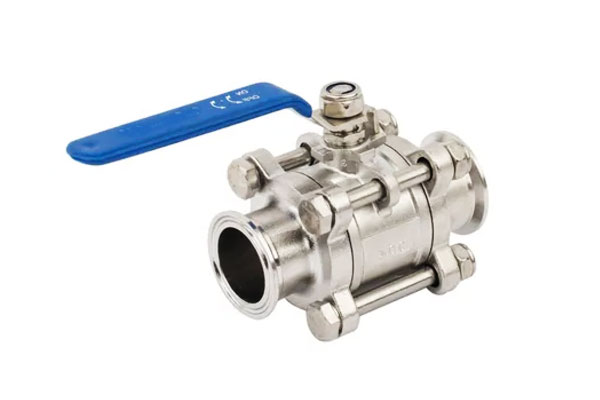
Jenis injap
(Gunakan kategori ini untuk memenuhi keperluan operasi - Penyelenggaraan, tekanan, saiz, Piggability, Tork dan keselamatan.)
| Varian | Ciri -ciri utama | Kelebihan | Batasan | Kes penggunaan biasa | Petua pemilihan |
| Satu keping (monoblock) | Pemutus/pemesinan badan tunggal, sampul surat terkecil | Kos terendah, padat, beberapa laluan kebocoran | Tidak boleh digunakan dalam talian; saiz terhad | Barisan perkhidmatan umum kecil | Gunakan di mana penggantian boleh diterima dan perkhidmatan tidak kritikal |
| Dua keping (Split-body) | Bolted dua bahagian, hujung boleh tanggal untuk dalaman | Pembaikan lebih mudah daripada 1-pc; kuat | Memerlukan pembongkaran saluran paip separa | Perkhidmatan Perindustrian Am | Keseimbangan kos dan penyelenggaraan yang baik |
| Tiga keping | Modul tengah boleh ditanggalkan dengan hujung di tempat | Penyelenggaraan dalam talian, Perubahan kerusi/pembungkusan cepat | Capex dan berat yang lebih tinggi | Garis kritikal yang memerlukan perkhidmatan yang kerap | Lebih disukai untuk loji proses dengan kekangan uptime |
| Kemasukan atas | Bonet teratas boleh ditanggalkan untuk akses dalaman | Perkhidmatan injap besar tanpa penyingkiran paip | Pengedap bonet kompleks; kos yang lebih tinggi | Injap yang sangat besar, Perkhidmatan Penapisan/Turbin | Gunakan apabila penyingkiran injap tidak praktikal |
| Floating-Ball | Bola bebas beralih, Kerusi memuatkan bola | Mudah, Kos rendah untuk saiz kecil/med | Beban tempat duduk meningkat dengan tekanan → tork yang lebih tinggi | Sistem tekanan rendah hingga sederhana | Sesuai sehingga saiz sederhana; tidak sesuai dengan sangat tinggi Δp |
| Trunnion yang dipasang | Bola disokong oleh trunnions/atas & bawah | Tork operasi rendah pada tekanan tinggi; pengedap stabil | Lebih kompleks dalaman; kos yang lebih tinggi | Diameter besar, Talian paip tekanan tinggi | Diperlukan untuk >6"/ Aplikasi tekanan tinggi |
V-Port / V-ball |
Bola berbentuk v atau tempat duduk untuk dikawal | Bagus kasar, kebolehtelapan linear | Rendah ketat shutoff vs tempat duduk penuh; khusus | Kawalan, Metering, menggabungkan | Gunakan di mana pengasingan + beberapa kawalan aliran diperlukan |
| Double-block-and-bleed (Dbb) | Dua kerusi bebas + bolong rongga | Pengasingan positif untuk penyelenggaraan, selamat berdarah | Lebih kompleks, tork yang lebih tinggi & kos | Saluran paip yang memerlukan pengasingan mutlak | Tentukan untuk tugas pengasingan kritikal keselamatan |
| Rongga penuh / bertekanan | Rongga yang dipenuhi dengan cecair yang serasi atau dibebankan | Melindungi tempat duduk dalam kitaran temp/termal yang tinggi | Memerlukan penyelenggaraan sistem penampan | Hidrokarbon panas, Steam dengan keperluan perlindungan tempat duduk | Gunakan apabila pendedahan bendalir akan merosakkan tempat duduk |
| Reka bentuk api yang selamat | Kerusi lembut yang disokong oleh kerusi logam per api 607 | Mengekalkan pengasingan selepas pendedahan kebakaran | Kos yang lebih tinggi; pengedap yang lebih kompleks | Perkhidmatan hidrokarbon, FPSO, penapisan | Wajib di mana kod kebakaran memerlukannya |
| Reka bentuk kriogenik | Bahan Temp Rendah, batang lanjutan, Tempat duduk khas | Pengedap yang boleh dipercayai pada t yang sangat rendah | Bahan khusus & ujian | Lng, Tangki Cryogenic, garisan gas berkembar rendah | Pilih bahan tempat duduk suhu rendah & Pembungkusan batang |
| Piggable / kebersihan / varian buburan | Kontur dalaman & Tempat duduk dioptimumkan untuk fungsi tertentu | Membolehkan pigging / CIP / Rintangan lelasan | Mungkin memerlukan geometri tersuai / Hardfacing | Pipeline Spiking, CIP Pharma, Pengangkutan buburan | Sahkan Pelepasan Babi OD / FDA selesai / Salutan HVOF |
Jenis sambungan akhir (Bagaimana injap bergabung dengan paip)
(Pilih setiap kelas tekanan, strategi penyelenggaraan, dan standard tumbuhan.)
| Sambungan | Kelebihan utama | Penggunaan biasa |
| Flanged (RF/FF) | Perhimpunan/pembongkaran mudah | Tumbuhan Proses Umum |
| Butt-Weld (Bw) | Lancar, Piggable, integriti yang tinggi | Talian paip batang, Perkhidmatan Tinggi T/P. |
| Socket-Weld (SW) | Padat untuk saiz kecil | Garisan tekanan tinggi kecil |
| Diikat (NPT/BSP) | Cepat, Kos rendah untuk injap kecil | Instrumentasi, garis sementara |
| Wafer / Lug | Padat; Lug membolehkan penyingkiran bebibir buta | HVAC, stesen pam |
| Tri-clamp / kebersihan | Cepat, bebas celah, CIP mesra | Makanan, Pharma, Bioteknologi |
Pilihan penggerak
| Penggerak | Kelebihan utama | Penggunaan biasa |
| Tuas manual | Sangat mudah, kos rendah | Injap kecil, operasi yang jarang berlaku |
| Kotak gear / Handwheel | Kelebihan mekanikal untuk kegunaan manual | Injap besar tanpa kuasa |
| Pneumatik (bertindak dua kali) | Cepat, kuat, boleh dipercayai | Kawalan hidup/mati dalam loji proses |
| Pneumatik (Spring-Return) | Kedudukan yang selamat-selamat dalam | ESD / penutupan keselamatan |
| Putar elektrik | Kawalan jauh tepat, modulasi | Integrasi DCS, tapak terpencil |
| Hidraulik / Electro-Hydraulic | Tork yang sangat tinggi | Injap yang sangat besar, Subsea/Offshore |
| Penggerak pintar + kedudukan | Modulasi yang tepat + Diagnostik | Injap kawalan, sistem automasi |
6. Proses Pembuatan Utama-Injap Bola Penuh

Pembentukan utama: pemutus/penempaan / Bar-stock
- Kaedah setiap reka bentuk: Cast (pasir/Pelaburan Pelaburan) untuk kompleks, badan besar; stok palsu atau bar untuk bahagian integriti yang lebih kecil atau tinggi.
- Kawalan kritikal untuk casting: mencairkan terkawal (EAF/induksi + Lf/vd), Penapisan seramik, Gas Argon, gating arah & risers, menggigil untuk bahagian tebal. Sasaran dibubarkan H₂ < 5 ppm.
- Menuangkan temp tipikal: 1,550-1,600 ° C untuk aloi Cr-Mo (Laraskan aloi); Hadkan Panas Super untuk mengelakkan bijirin kasar.
Pemeriksaan: RT/UT pada bahagian tekanan (100% di mana diperlukan), Visual untuk air mata panas, Pemeriksaan Dimensi Bor Teras.
Pemesinan kasar & penstabilan
- Giliran kasar/kilang untuk mengeluarkan kulit, sisa riser dan membenarkan rawatan haba.
- Mengekalkan rujukan datum untuk concentricity dan menanggung penjajaran. Gunakan pemeriksaan pertama CMM.
- Elaun kasar yang biasa: 1-4 mm bergantung pada elaun dan elaun salutan.
Rawatan haba (di mana diperlukan)
- Sapukan kitaran yang berkelayakan bagi setiap bahan: Mis., Normalkan/Anneal → Quench/Air Cool → Temper untuk Keluli Alloy. PWHT untuk aloi (untuk badan yang dikimpal atau keluli aloi) mesti direkodkan.
- Catat carta relau untuk setiap beban (T vs masa) dan menandakan bahagian dengan ID haba.
Selesai Pemesinan - Geometri Kritikal & toleransi
- CNC menyelesaikan semua ciri kritikal: Tempat duduk bola melahirkan, Bola melahirkan, Bahan batang, wajah bebibir, tatap muka.
- Toleransi sasaran (tipikal):
-
- Menanggung konsentrik: ≤ 0.05 mm ke paksi bola untuk injap kecil/med; ≤ 0.1-0.2 mm untuk sangat besar.
- Tatap muka: Per ASME B16.10 Toleransi ± 1-3 mm bergantung pada saiz/kelas.
- Runout Ball Valve / Sphericity: ≤ 0.02-0.05 mm.
- Kemasan permukaan (dibasahi): Umum ≤ Ra 0.4 μm; sanitari ≤ Ra 0.25 μm; Kecaman tinggi ≤ Ra 0.2 μm.
- Hardfacing/hvof overlay: Sapukan dan mesin ke ketebalan nominal. Ketebalan overlay biasa: 0.3-1.0 mm (bintang) atau 100-300 μm untuk salutan HVOF. Sahkan ikatan dan ketiadaan retak.
Pemeriksaan: Laporan CMM, Pengukuran Permukaan-Finish, pemetaan kekerasan, ketebalan salutan & Ujian lekatan.
Sub-pemasangan & trim lapping
- Bola/tempat duduk lapping/lapping lekapan untuk membuat corak hubungan dan memastikan pengedap tempat duduk. Ukur jalur hubungan tempat duduk dan pastikan keseragaman.
- Pasang mata air tempat duduk, belakang belakang, pin anti-statik, pelepasan tekanan/kelengkapan ekzos seperti yang diperlukan. Pembungkusan beban langsung sebelum ditetapkan jika ditentukan.
Sasaran: gelembung ketat untuk perkhidmatan cecair di tempat duduk lembut baru (Sahkan spesifikasi ujian setiap tempat duduk).
Perhimpunan Akhir & pengesahan tork
- Kumpulkan injap lengkap, Sapukan preload tork yang ditentukan pada kelenjar, Ikuti urutan pengikat pengikat terkawal (pengganda tork atau tork hidraulik).
Prosedur tork dan nilai tork pengikat yang direkodkan. - Pasang penggerak (Sekiranya sebahagian daripada bekalan) dan periksa ISO 5211 Fitment.
Ujian
- Ujian shell hidrostatik: 1.5× tekanan kerja maksimum (atau setiap po); tekanan dokumen, temp, Tempoh dan kebocoran yang boleh dilihat. 100% diuji.
- Ujian kebocoran tempat duduk: untuk API 598 / ISO 5208 had angka (Nyatakan tekanan cecair/gas dan dibenarkan kelas ML/min atau gelembung). 100% diuji.
- Berbasikal berfungsi: minimum 5 kitaran di bawah tekanan atau seperti yang ditentukan; Rekod tork di terbuka/tutup dan perhatikan tingkah laku tempat duduk/pembungkusan.
- Lengkung tork & Cv (sampel atau 100% setiap kritikal): Ukur Breakaway dan Running Tork pada ΔP = 0 dan dinilai ΔP; vendor untuk membekalkan tork vs lengkung tekanan. CV mesti disediakan dengan keadaan ujian.
- Pelepasan buruan (jika diperlukan): ISO 15848 ujian untuk pembungkusan batang / pakej penggerak.
- Rekod NDE: RT/UT/MPI/LPI seperti yang diperlukan untuk casting/kimpalan.
7. Piawaian, Ujian, dan pensijilan
Piawaian dan ujian utama untuk menentukan:
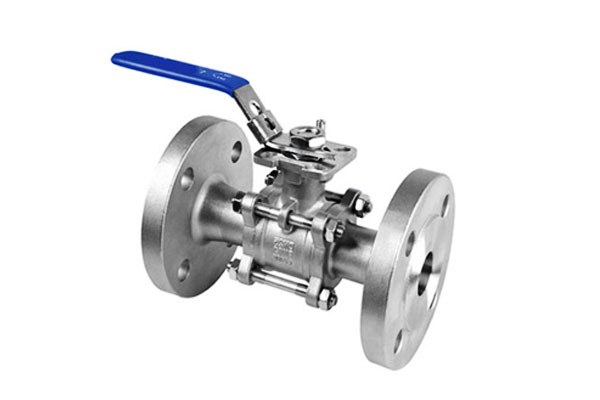
- Reka bentuk & pembuatan: ASME B16.34, API 6D (injap saluran paip), Dalam 12516
- Tatap muka / Sambungan akhir: ASME B16.10, B16.5 (bebibir)
- Penggerudian bebibir: ASME B16.5 / EN1092
- Ujian tekanan: API 598, ISO 5208 (ujian kerang dan tempat duduk)
- Ujian kebakaran: API 607, ISO 10497
- Kebolehpercayaan bahan: Dalam 10204/3.1 sijil (atau 3.2) - Laporan ujian kimia dan mekanikal
- Pelepasan buruan: ISO 15848-1/2 untuk meterai batang
- Nde: Radiografi / Ultrasonik pada casting kritikal/kimpalan; PMI untuk pengesahan bahan
- Kemasan permukaan / kebersihan: 3A, Ehedg, Ra ≤ 0.8 μm untuk makanan/pharma
8. Mod kegagalan biasa, Penyelesaian masalah, dan pengurangan
| Mod kegagalan | Punca akar | Gejala | Pengurangan |
| Kebocoran tempat duduk | Memakai tempat duduk, penyemperitan, serpihan | Kebocoran melalui tempat duduk | Penapis hulu (≤ 1/3 orifis), menggantikan tempat duduk, Gunakan kerusi logam jika diperlukan |
| Kebocoran batang | Pakaian pembungkusan, mampatan yang tidak betul | Kebocoran di batang | Kelenjar re-torque, ganti pembungkusan, Pertimbangkan mata air langsung |
| Hakisan bola/pitting | Perkhidmatan kasar, Cavitation | Kekasaran permukaan, kebocoran | Mengeras bola atau hardface, Pasang penyaman aliran, Gunakan port penuh untuk mengurangkan pancang halaju |
| Kegagalan penggerak | Kerugian bekalan udara, kesalahan elektrik | Injap terperangkap | Kawalan berlebihan, Jadual Penyelenggaraan, menimpa manual |
| Penyitaan | Kakisan, kimpalan sejuk | Operasi kaku | Pilih lapisan yang sesuai (Electroless Ni), Sapukan gris, latihan berkala |
| Kebocoran badan | Porositi pemutus, kegagalan gasket | Kebocoran luaran | Nde di pembuatan, ganti gasket, dan retort |
9. Permohonan utama injap bola port penuh
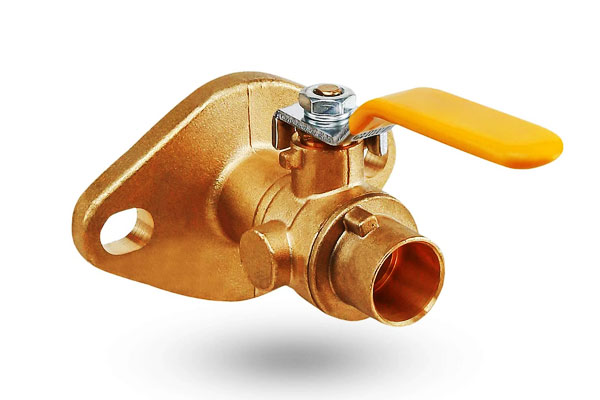
- Minyak & Gas (saluran paip / garis eksport): injap punggung piggable, Trunnion untuk saiz besar, Trims keras untuk pasir/pepejal.
- Petrokimia / Penapisan: Talian proses tinggi T dan gelung pembersihan-badan aloi dan tempat duduk logam; PWHT di mana diperlukan.
- Penjanaan kuasa: air suapan, tajuk dan jalur batang bantu -penggunaan badan aloi dan tempat duduk logam untuk wap panas.
- Pemprosesan kimia: Multiphase dan Kakisan Sawah-Seleksi Alloys Hakisan Kakak (316L., Hastelloy, dupleks) dan tempat duduk yang sesuai (Ptfe/mengintip atau logam).
- Air & Utiliti: Stesen pam dan pemeteran larian besi atau tahan karat, flanged atau lug berakhir.
- Buburan / Perlombongan: Perkhidmatan kasar menggunakan bola keras dan cincin kerusi logam/seramik yang boleh diganti.
- Kebersihan / Pharma: Tri-clamp, Electropolished 316L, 3-Reka bentuk sekeping untuk CIP dan penyelenggaraan yang mudah.
- Cryogenics / Lng: Bahan Temp Rendah dan Tempat Duduk/Pembungkusan Khas (Pctfe/uhmw-atau); batang lanjutan.
10. Perbandingan dengan jenis injap yang bersaing
| Ciri / Kriteria | Injap bola port penuh | Standard (Dikurangkan) Injap bola pelabuhan | Injap pintu | Injap Globe | Injap rama -rama |
| Laluan aliran | Tidak terhad (≈ ID paip); minimal ΔP | Bor terhad → lebih tinggi ΔP | Lurus; rendah ΔP | Jalan tortuous → tinggi Δp | Aliran menghalang cakera; Sederhana ΔP |
| Cv (Pekali aliran) | Tertinggi; berhampiran kapasiti paip | ~ 70-80% pelabuhan penuh | Tinggi | Sederhana | Sederhana -tinggi (Saiz bergantung) |
| Keupayaan shutoff | Gelembung-ketat (Tempat duduk lembut) atau kelas V -VI (logam) | Sama seperti port penuh | Baik, Tetapi pakaian tempat duduk mungkin | Pengedap yang sangat baik | Sederhana; Bergantung pada elastomer |
| Babi / Pembersihan | Ya, Piggable sepenuhnya | Tidak | Ya | Tidak | Tidak |
| Tork pengaktifan | Rendah sederhana; penggerak padat | Rendah | Tinggi (Rising batang) | Tinggi | Sangat rendah |
| Kelajuan kitaran | TURUNGAN PERKHIDMATAN CEPAT (90°) | TURUNGAN PERKHIDMATAN CEPAT (90°) | Perlahan (MULTI-TURN) | Perlahan (MULTI-TURN) | TURUNGAN PERKHIDMATAN CEPAT |
| Julat saiz | ½ " - 48"+ | ½ " - 24 ″ | 2" - 72"+ | ½ " - 24 ″ | 2" - 120"+ |
| Julat tekanan/suhu | Lebar: Hingga Asme 2500#, Cryogenic hingga 600 ° C+ (Tempat duduk logam) | Sama seperti port penuh tetapi kurang mengalir | Cemerlang untuk p/t tinggi | Kawalan yang sangat baik di Tinggi T | Sederhana; terhad oleh bahan tempat duduk |
| Kawalan aliran / Pendikit | Miskin (tidak disyorkan; Risiko hakisan kerusi) | Miskin | Adil | Cemerlang (kawalan yang tepat) | Adil (Kawalan anggaran) |
| Penyelenggaraan | Tempat duduk/pembungkusan boleh diganti; 3-Reka bentuk sekeping yang boleh digunakan sebaris | Sama | Penggantian baji/tempat duduk sukar | Penggantian kerusi sukar | Mudah; cakera elastomer boleh diganti |
| Berat / Ruang | Padat; lebih ringan daripada pintu/globe | Padat | Berat, Long Face-to-Face | Berat, panjang | Paling ringan; Bersemuka pendek |
| Aplikasi biasa | Saluran paip, garis piggable, Lng, kebersihan, Perkhidmatan CV Tinggi | Utiliti umum, Perkhidmatan yang tidak berputar | Pengasingan dalam saluran paip, tinggi-p/t | Peraturan aliran, pendikit | HVAC, penyejukan air, Pengasingan besar diameter |
11. Inovasi masa depan: Injap port penuh pintar dan lestari
Evolusi injap bola port penuh didorong oleh dua trend: IOT Perindustrian (Iiot) integrasi dan kemampanan -baik bertujuan meningkatkan kecekapan dan mengurangkan kesan alam sekitar.
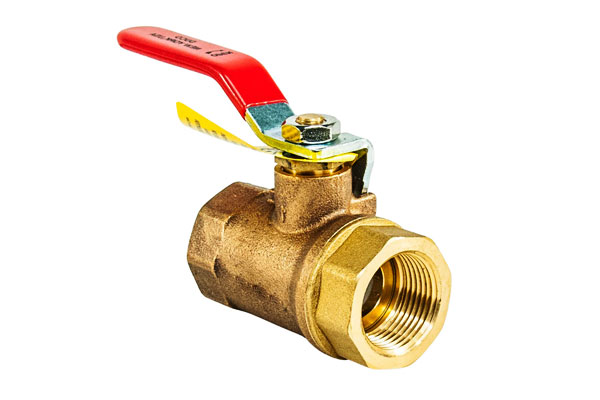
Teknologi injap pintar
- Sensor tertanam: Injap port penuh dengan tekanan, suhu, dan sensor aliran (Mis., Injap bola pintar Rusco) menghantar data masa nyata ke pengawal pusat.
Ini membolehkan pengendali penyelenggaraan ramalan untuk memakai atau menyumbat tempat duduk sebelum prestasi merosot.
Di loji rawatan air, injap port penuh pintar mengurangkan downtime yang tidak dirancang oleh 40%. - Kembar digital: Replikasi maya injap port penuh (Mis., Platform ABB Keupayaan ™) mensimulasikan prestasi dalam pelbagai keadaan (kadar aliran, tekanan).
ExxonMobil menggunakan kembar digital untuk mengoptimumkan operasi injap port penuh dalam saluran paip minyak, mengurangkan penggunaan tenaga oleh 12%. - Penggerak elektrik 2.0: Penggerak elektrik generasi akan datang (Mis., Emerson Bettis ™) Menawarkan ketepatan kedudukan 0.1 ° dan kecekapan tenaga 50% lebih tinggi daripada sistem pneumatik.
Dipasangkan dengan injap port penuh V, Mereka membolehkan pendikit yang tepat untuk proses aliran tinggi.
Reka bentuk yang mampan
- Bahan kitar semula: Injap port penuh dibuat dengan 30% Keluli tahan karat yang dikitar semula (Mis., Kitz Corporation) Kurangkan jejak karbon oleh 15% vs. keluli dara, Mesyuarat EU CSRD (Arahan Pelaporan Kemapanan Korporat) keperluan.
- SEAL LOW-LEAKAGE: Kerusi komposit PTFE-silikon baru mengurangkan kebocoran ke <0.0001 std cm³/s (melebihi ISO 5208 Kelas VI), meminimumkan kesan alam sekitar dari cecair toksik.
- Pembinaan modular: 3D-dicetak teras injap port penuh (Mis., Menggunakan teknologi SLM) Dayakan saiz bor tersuai untuk aplikasi khusus, mengurangkan sisa bahan oleh 30% vs. pemesinan tradisional.
12. Kesimpulan
Ball Port Full injap lebih daripada sekadar peranti kawalan aliran; mereka adalah pemboleh kecekapan yang mengurangkan kos tenaga, Kurangkan downtime, dan memastikan operasi yang boleh dipercayai dalam proses perindustrian kritikal.
Reka bentuk bore penuh mereka yang unik menghapuskan sekatan aliran, sementara bahan canggih dan varian pembinaan menyesuaikannya dengan mengakis, suhu tinggi, dan persekitaran tekanan tinggi.
Memandangkan industri menuntut kelestarian yang lebih tinggi dan operasi yang lebih bijak, Injap Bola Port Penuh akan terus berkembang -mengintegrasikan sensor IoT, bahan kitar semula, dan ketepatan penggerak.
Untuk jurutera, Pasukan perolehan, dan pengendali loji, Memahami nuansa teknikal injap bola port penuh -dari pemilihan bahan ke penyelenggaraan -adalah penting strategik untuk mengoptimumkan prestasi, mengurangkan kos, dan memenuhi matlamat alam sekitar.
Soalan Lazim
Bilakah saya harus memilih injap bola port penuh di atas injap port yang dikurangkan?
Pilih port penuh jika: (1) kadar aliran tinggi (>100 gpm) dan penurunan tekanan mesti diminimumkan; (2) Media mengandungi pepejal (buburan, Air kumbahan) atau adalah kelikatan tinggi (minyak mentah, sirap);
(3) Pigging/pembersihan paip diperlukan. Port yang dikurangkan lebih baik untuk aliran rendah, Aplikasi sensitif kos.
Bahan apa yang terbaik untuk injap bola pelabuhan penuh di air laut?
Dupleks 2205 atau super dupleks 2507.
Aloi ini mempunyai pren (Nombor setara rintangan pitting) daripada 32-45, Menentang kakisan klorida (>200 ppm cl⁻) Lebih baik daripada 316L (Kayu 24-26). A 2205 injap port penuh di air laut berlangsung selama 15-20 tahun vs. 5-7 tahun untuk 316L.
Bolehkah injap bola port penuh digunakan untuk pendikit?
Injap port penuh standard miskin untuk pendikit (mereka menyebabkan peronggaan di bukaan separa).
Untuk proses aliran tinggi, Gunakan injap port penuh V-notched (15° -90 ° V-Cut), yang mencapai nisbah turndown aliran sehingga 50:1 dan meminimumkan peronggaan.
Apakah hayat perkhidmatan biasa injap bola pelabuhan penuh?
10-25 tahun, bergantung pada bahan dan penyelenggaraan.
Contohnya: (1) 316L Port penuh dalam perkhidmatan kimia (penyelenggaraan tahunan) Berlahan 15-20 tahun;
(2) 2205 Dupleks dengan salutan tungsten dalam perkhidmatan buburan (6-penyelenggaraan bulan) Berlahan 20-25 tahun.
Bagaimana saya menguji injap bola port penuh untuk kebocoran?
Menjalankan API 598 ujian tempat duduk: (1) Sapukan 1.1 × tekanan kerja ke salur masuk; (2) Sekat keluar dan tenggelam injap di dalam air;
(3) Periksa gelembung -tiada gelembung menunjukkan ISO 5208 Pematuhan Kelas VI. Untuk injap besar, Gunakan kaunter gelembung untuk mengukur kebocoran (<0.1 std cm³/s).



